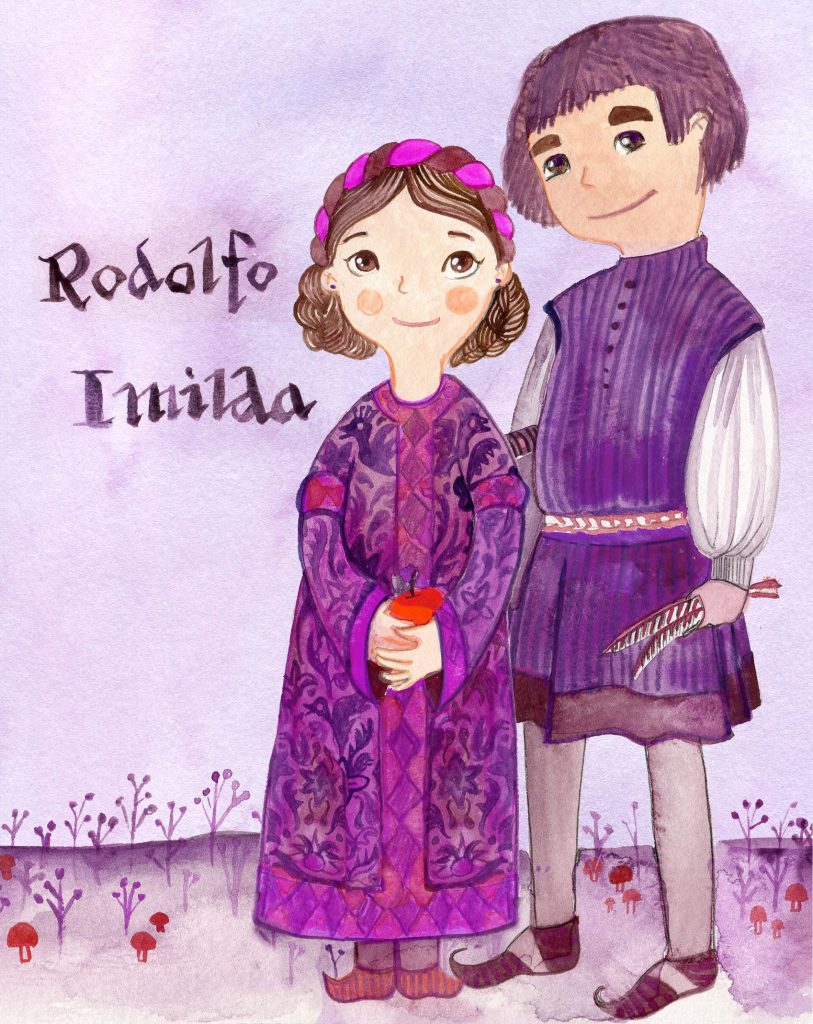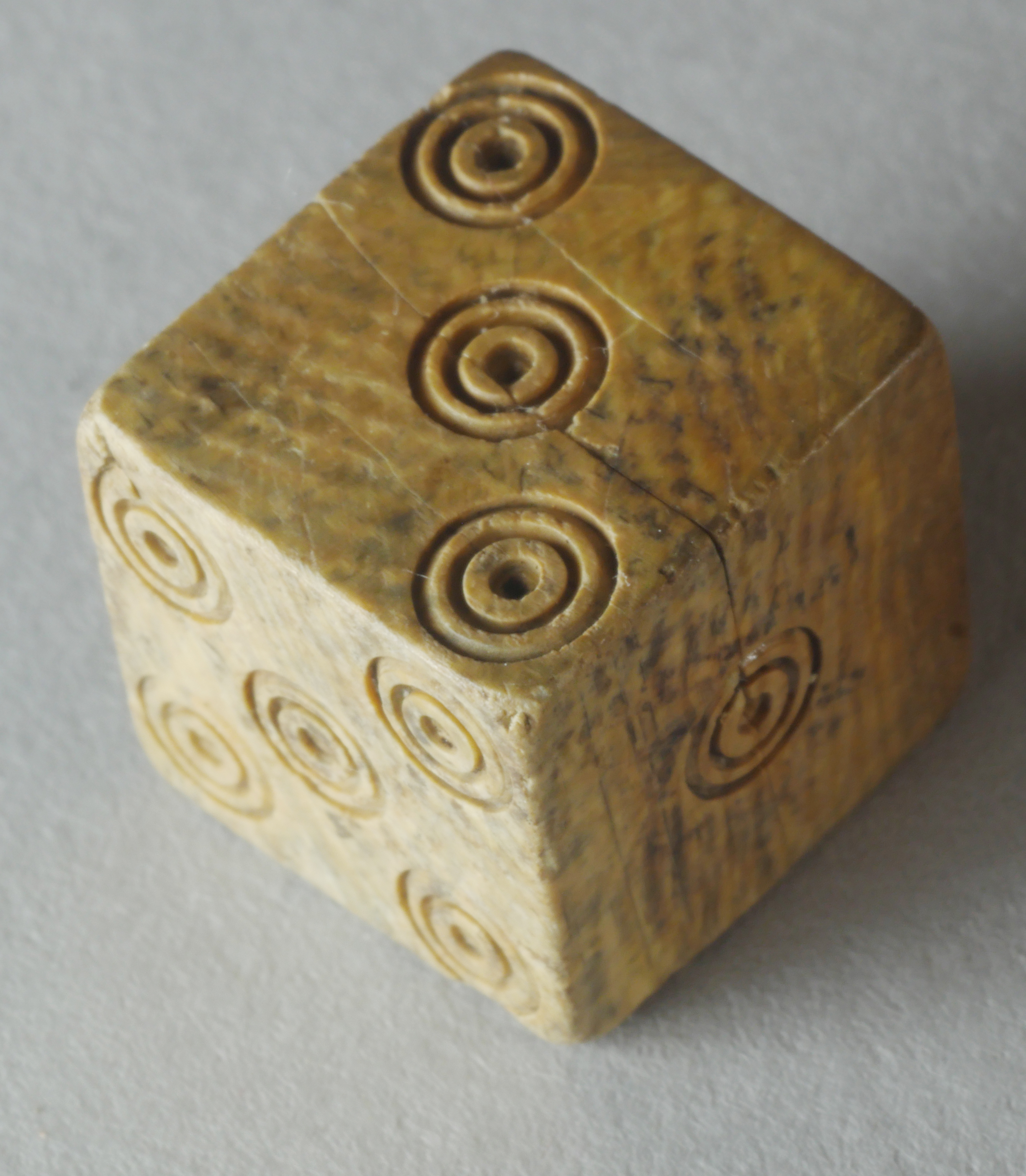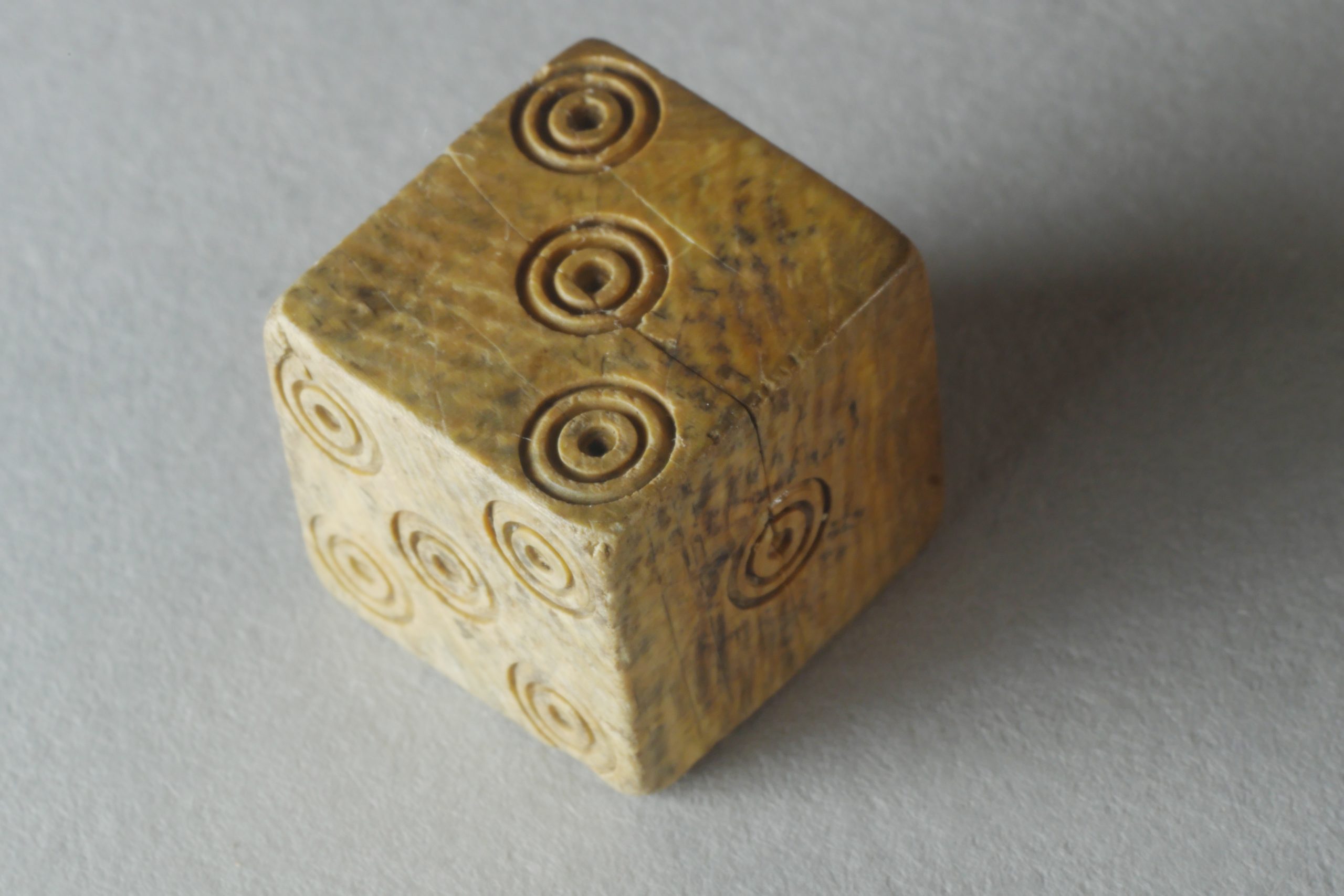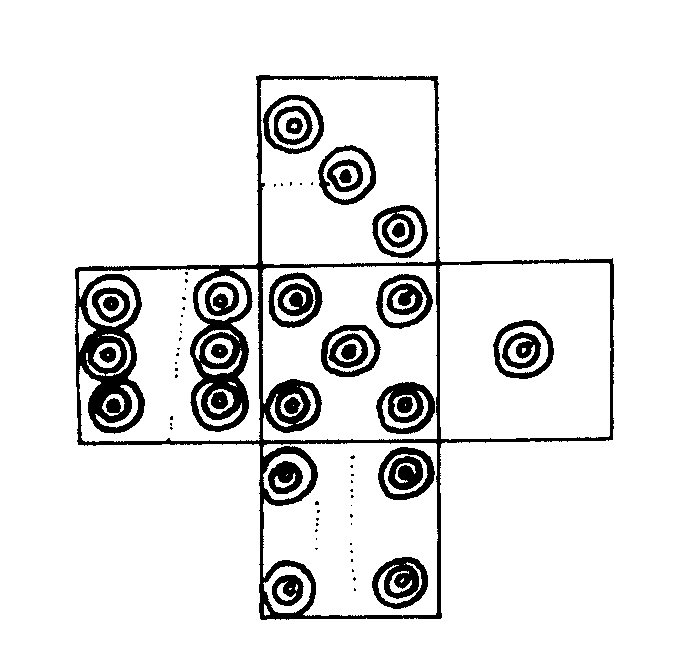
Roman Cetamura
Die
Period | Roman |
Year | ca. 100 – 50 BCE |
Material | Ivory |
Location | Well #1 |
Cet. Inventory | Inv. C-13-808 |
Etruscan and Roman dice were very much like our modern examples, with the opposite sides adding up to 7. They could be used for gaming but also for foretelling the future based on the number that came up when the die was thrown.
Prov. 5N/18W/97.1. W. on all sides: 1.3. Wt. 4 g
Well-preserved cubic die that indicates each number unit with two carved concentric circles and a central dot. The item was cracked into two pieces that were rejoined exactly. All sides are legible and surface preservation is excellent. The combination of numbers is the popular 1/6, 2/5, 3/4, in which opposite sides add up to 7. From the transitional context between Etruscan and Roman periods found along with many worked bone items such as hairpins/styli.
Dating: Found in Well Group IV (ca. 100–50 BCE).
Bibl.: Artioli, Nociti, and Angelini 2011. Binaco 2013, 213 (no. 1.2.6-18). M. Feugère and A. Gilles “Die: cubic, hollow.” Artefacts: DEJ-4002, http://artefacts.mom.fr/result.php?id=DEJ-4002 (with full bibliography).
Etruscan activities for kids
Meet Lucius & Fulvia
Roman activities for kids

Meet Rodolfo & Imilda
Medieval activities for kids







